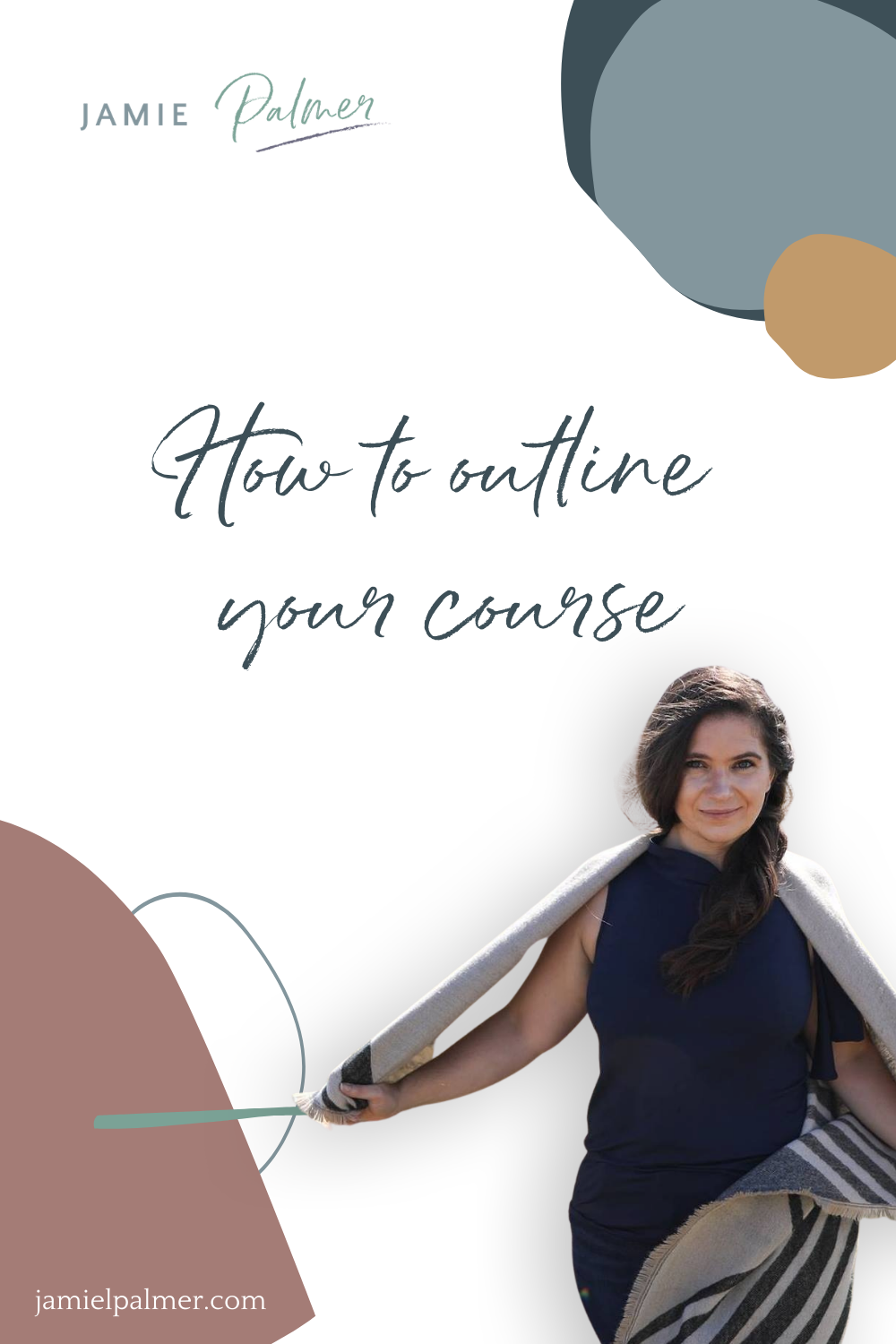
How do you outline a course curriculum? Maybe you’ve been playing with the thought of building a course and you didn’t know how and where to start. In this blog post, I am going to share with you my proven system for outlining your course curriculum that I take all my clients and students through to build their online courses.
Everyone wants to have a course evergreen program or group program these days so that they can optimize their time. But one of the biggest challenges that I’ve seen is getting students to finish that course. It is a huge problem in the online industry and something that many entrepreneurs like you and me need to address. That starts by
- creating a curriculum that people will actually consume
- get the transformation that they’ve been promised
- and move forward in their business
Outline your course curriculum
Course topic
I always start with what is the topic, the transformation, and the benefits to my human who I’m marketing to? When it comes to my course curriculum I always try to address the elephant in the room, what is the problem that I’m going to solve? How am I going to help them achieve that?
So when I start to think about my topic, I think about what are all the problems that they’re facing? And how is it that I can help them solve that problem? I always start there, because ultimately, you want to create a course around a topic and around a problem that is unique to your past lived experiences, but also helps the ideal client move forward. It is important to address the problem that the ideal client believes that they have. If you don’t know what I’m talking about, you should watch my understanding your ideal client video.
Course duration
Once you have your topic, let’s look at the number of weeks or modules that you will use to help your students get their transformation. One of my favorite things to do when it comes to creating a course is to have little post-it notes. Once you understand the problems that your course is going to help your ideal clients solve , take the top two or three and write them on a post-it note and stick them on the wall. Now that you have the three main problems that you will help your ideal client solve, take a different color post-it and map out the number of weeks that your program is going to be. Six-weeks, eight weeks…
Let’s say it’s a six-week program. Stick six little stickers under your problems to solve stickers. These six stickers represent your weeks or modules. So essentially, you now have your three problems that you solve and your number of modules.

Module topics
The next step is to look at the 10,000-foot view of all the topics you need to cover and pick a third color of post-it notes. Write the topics on the post-it notes and stick them under the different modules. For many people, this might take a couple of weeks. Some of you might just need an afternoon with no distractions, but I want you to go through it all and think of all the possible topics.
For example in my world when I build out any sort of course or program, one thing that differentiates me is that I not only understand the strategy aspect in the marketing aspect, I also understand the technical, tactical, and implementation aspects and I understand where those two worlds diverged in order to bring something to life online. Not many people who do what I do understand that.
So, when I approach my curriculum design, I always look at it from the perspective of
- What’s the strategy that somebody might need to know?
- The Why behind why we’re doing this?
- What is the technical, tactical, nitty-gritty how-to, of actually getting in the weeds of doing this.
(In the coming weeks, I will create a video for each side of that thought process, because I know for many people, if they understand the why, and the strategy behind doing something that will be easier for them to wrap their brain around the how, the tactical, or the technical).
Once you understand the whole process, the implementation becomes more seamless and the mindset matters that arise, often calm down, because there’s a fundamental understanding of both sides, the left brain, and the right brain.
When you think about your own curriculum, how can you then divide it up in a similar way, so that it’s easy for people to then consume that content?
The course deliverables
Once you’ve outlined all the topics for your curriculum design and you’ve covered the left brain and the right brain, the thinking from a, 1000, 5000, and 10,000-foot view, you need to look at what all the deliverables are that are needed for each of these things (video, downloadable, audio files, etc). You do that for each of the different topics that you have listed in each module or week. That way it becomes a lot easier to see what content you need to create first. (For example, you might need to create video content first because you need to pass it off to your videographer to edit). It also gives you an idea of the scope of the amount of work that you need to create.
Next, sleep on it, especially, if you do it all in one sitting. A good night’s sleep will let you know if it’s ready to go; if it feels right. Let it sit for a few days. Oftentimes, we’ll realize that maybe the sequence with which we have things set up isn’t the most logical for somebody who might be new to this sort of thing. You might find that some of the topics aren’t necessarily in the right order. That’s part of the post-it beauty. You can move them around and adjust accordingly so that you have this visual of how everything in your course curriculum is going to be laid out. I usually spend about one or two weeks going through this process, massaging and strategizing about whether this is the most logical path for my clients, and if this is going to get them the transformation they need.
In the upcoming weeks, I’m going to share some retention and engagement tips so that you can keep people engaged throughout this course, process, or group program.
Remember, it’s typically around the midway point where you see some fallout. So, it’s always good to strategically place some wins around that point in your curriculum, to help people stay re-engaged and keep that momentum going so that they keep moving forward.
Simplify your course process
Finally, once you have everything mapped out, break it down one more time. I want you to physically go through each one of your topics and see if you could possibly make it simpler. Can you break it down into a smaller chunk? When you are teaching online and you’re teaching adult learners, you want to make sure it’s short, concise, sweet, simple, and easy for them to implement. The average adult needs to have a shift happen every two to three minutes in order to stay engaged.
- Think about how you could make this topic shorter?
- Could you teach it in a simpler way?
- How can you break it down even further?
Your problem and the topic that you’re covering in your course is that 10,000-foot view. Each one of your modules, aka weeks, is that 5000-foot view. And as you get into the course, that is your 1500-foot view where you’re teaching people and moving them through the process.
__________________________
Are you wondering if your social media marketing is even working? Are you posting and hearing crickets? For a limited time, I am offering customized Social Media and Marketing Snapshots for $47. These are a 2 – 3 page action plan designed specifically for your business. Grab yours today ===>>> www.socialmediasnapshot.com






Recent Comments